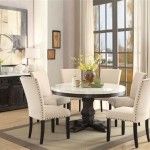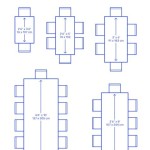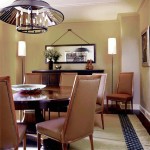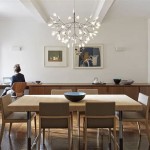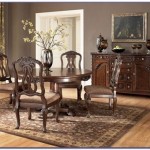Boston Interiors Dining Room Tables: A Guide to Style, Selection, and Craftsmanship
Boston Interiors has established itself as a prominent retailer of home furnishings, known for its diverse selection and commitment to quality. Among their many offerings, dining room tables stand out as a focal point, reflecting both functional necessity and aesthetic expression. This article explores the range of dining room tables available at Boston Interiors, highlighting key stylistic considerations, material options, and factors to consider during the selection process.
Understanding the Design Landscape of Boston Interiors Dining Room Tables
The aesthetic range within Boston Interiors' dining room table collection is considerable, catering to diverse tastes and interior design preferences. Classic styles, often characterized by traditional silhouettes and rich wood finishes, feature prominently. These tables frequently incorporate details such as turned legs, carved aprons, and time-honored construction techniques. For example, a mahogany table with a Queen Anne leg exemplifies this category, offering a sense of formality and timeless elegance. Such tables are often paired with upholstered dining chairs to complete a sophisticated look.
Conversely, modern and contemporary designs emphasize clean lines, minimalist forms, and a focus on functionality. These tables may feature materials such as glass, metal, and lighter-toned woods, often with sleek, geometric shapes. A rectangular glass-topped table with stainless steel legs represents this aesthetic, providing a visually light and adaptable piece suitable for a variety of settings. Contemporary tables are frequently paired with chairs that mirror their streamlined design, creating a cohesive and uncluttered dining space.
Transitional styles bridge the gap between traditional and modern aesthetics, blending elements of both. These tables typically feature simplified versions of classic details, incorporating modern materials and finishes. A table with a distressed wood finish and a trestle base could be considered transitional, offering a sense of rustic charm while retaining a level of sophistication. Transitional tables are versatile and can be combined with a range of chair styles, allowing for personalized expression.
Beyond these core styles, Boston Interiors also offers tables with unique design features, such as extendable leaves, drop-leaf mechanisms, and specialized shapes like oval or round tables. Extendable tables are practical for those who frequently entertain guests, providing the option to expand the seating capacity as needed. Round tables encourage conversation and create a more intimate dining experience, while oval tables offer a compromise between the formality of a rectangular table and the intimacy of a round one. The design landscape caters to virtually any dining space requirement.
Exploring Materials and Construction of Boston Interiors Dining Room Tables
The durability and aesthetic appeal of a dining room table are largely determined by the materials used in its construction. Boston Interiors offers tables crafted from a variety of materials, each with its own distinct characteristics and benefits.
Solid wood tables, such as those made from oak, maple, cherry, and walnut, are highly valued for their strength, durability, and natural beauty. Solid wood offers a timeless quality and develops a richer patina over time. Different wood species offer varying grain patterns and color variations, allowing for a wide range of stylistic expressions. Oak, for instance, is known for its prominent grain and robust character, while cherry is prized for its smooth texture and warm reddish-brown hue. Walnut offers a darker, more sophisticated look with its intricate grain patterns.
Wood veneers offer a more budget-friendly alternative to solid wood, providing the appearance of solid wood at a lower cost. Veneers consist of thin layers of wood adhered to a substrate material, such as plywood or MDF (medium-density fiberboard). High-quality veneers can be indistinguishable from solid wood and offer excellent durability when properly applied. The use of veneers also allows for more intricate designs and patterns that may be difficult or costly to achieve with solid wood.
Metal accents, such as stainless steel, wrought iron, and brushed nickel, are frequently incorporated into modern and contemporary dining room tables. Metal provides a sleek and industrial aesthetic, adding to the table's stability and visual appeal. Stainless steel is particularly popular for its durability and resistance to corrosion, making it suitable for both residential and commercial settings. Wrought iron adds a more rustic and traditional touch, while brushed nickel offers a softer, more subtle metallic finish.
Glass tabletops are a common feature of contemporary dining room tables, offering a clean and modern look. Glass is easy to clean and maintain and allows light to pass through, creating a sense of spaciousness in smaller dining areas. Tempered glass is typically used for dining tables, providing strength and safety. Tempered glass is significantly stronger than ordinary glass and shatters into small, blunt pieces when broken, reducing the risk of injury.
Beyond the primary materials, the construction techniques employed in building a dining room table also play a crucial role in its durability and longevity. Traditional joinery methods, such as mortise and tenon joints, dovetail joints, and biscuit joints, are known for their strength and stability. These techniques involve interlocking pieces of wood to create a strong and lasting connection. Modern construction methods, such as screws, nails, and adhesives, are also used in table construction, often in conjunction with traditional joinery techniques. The quality of the construction is a key indicator of the table's overall value and lifespan.
Key Considerations When Selecting a Dining Room Table at Boston Interiors
Choosing the right dining room table requires careful consideration of several factors, including the size of the dining space, the number of people who will typically use the table, the overall style of the home, and the intended use of the table. It is therefore important to consider the following points.
The size of the dining room is a primary consideration when selecting a table. A table that is too large will overwhelm the space and make it difficult to move around, while a table that is too small will not provide adequate seating. Measure the dimensions of the dining room and allow for at least 36 inches of space around the table to accommodate chairs and provide ample room for movement. Consider the shape of the room as well. In a narrow rectangular dining room, a rectangular table may be the best choice, while in a square room, a round or square table may be more appropriate. If you have a smaller dining space and don't mind having a formal dining table, consider looking for a dining room set.
The intended use of the table will also influence the selection process. If the table will primarily be used for formal dining, a larger table with a more formal design may be appropriate. If the table will be used for everyday meals and casual gatherings, a smaller, more informal table may be sufficient. Consider the materials and finishes as well. A table that will be used frequently should be durable and easy to clean. For example, a table with a non-porous surface, such as glass or laminate, may be a better choice for families with young children.
The budget is another crucial factor to consider when selecting a dining room table. Dining room tables range in price from relatively inexpensive to quite expensive, depending on the materials, construction, and design. Establish a budget before beginning the shopping process and stick to it. Be sure to factor in the cost of chairs and other dining room furniture when determining the budget. Keep an eye out for sales and promotions, which can offer significant savings on dining room tables. Boston Interiors, like many retailers, will often have discounts available both online and in-store.
Finally, consider the overall style of the home when selecting a dining room table. The table should complement the existing décor and create a cohesive and harmonious look. If the home has a traditional style, a classic wooden table with traditional details may be appropriate. If the home has a modern style, a sleek, contemporary table with clean lines may be a better choice. Take into account the color palette of the dining room and select a table that complements the existing colors and finishes. Consider bringing samples of paint, fabric, and flooring to the store to help visualize how the table will look in the dining room.

The Perfect Dining Set Beyond Interiors Boston Home Style Blog

Maryanne Dining Room

Marietta Dining Room

Introducing Boston Interiors Custom Dining Beyond Home Style Blog

Dining Room Tables Boston Interiors

Montgomery 5 Piece Dining Set Chestnut

Product Highlight Hyannis Flip Top Table Beyond Interiors Boston Home Style Blog

Astoria 5 Piece Dining Set

Astoria Dining Table

Maryanne 72 Dining Table


